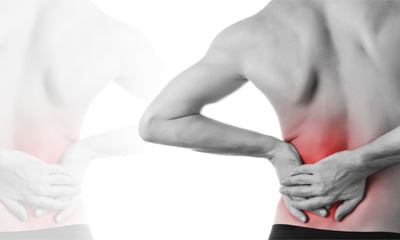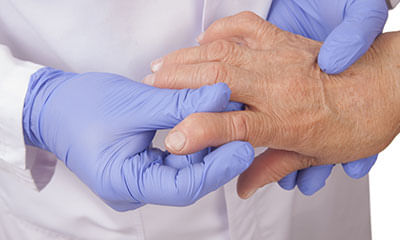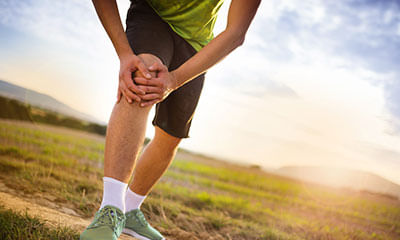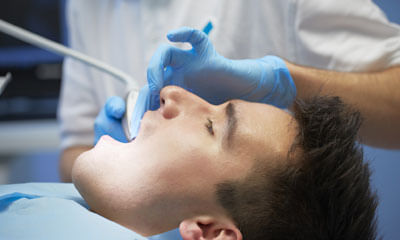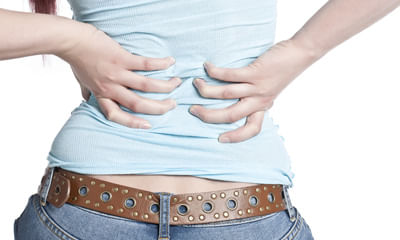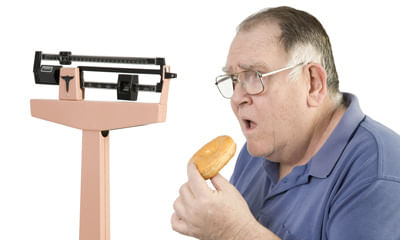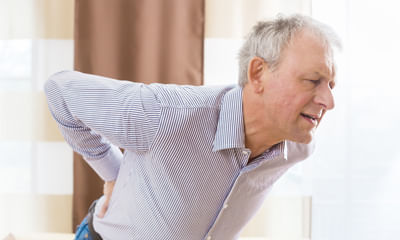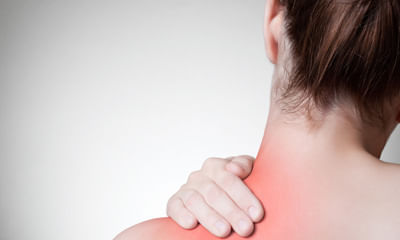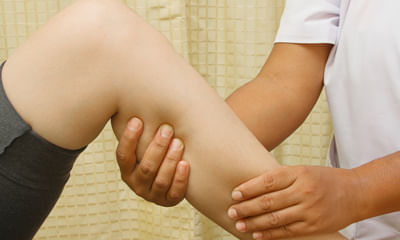Pain In Right Hand Near Thumb
There is a female of around 40 years she has heel pain (pricking pain) since two months what is the best treatment to gi ...
Ask Free Question
Minutes at a time. This is especially beneficial at the end of a long day or when you’ve spent a lot of time on your feet. Or, roll a frozen water bottle under your foot. This method incorporates a bit of massage, relieving tightness in the bottom of your foot. Massage. Massaging the arch of your foot helps to relieve pain and promote mobility. Use your fingers and knuckles to deeply massage your foot for 1 to 5 minutes at a time. One technique is to place both thumbs at the center line of your arch and move them to the outer edges of your feet. Inserts. Use cushion inserts in your shoes for additional support and cushioning. Inexpensive options can be purchased off the shelf. Wear supportive shoes with thicker soles and extra cushioning for additional support that can help to reduce tension in the plantar fascia. Kinesiology tape can be used to improve arch and heel support. Night splints. Many people find quick and effective results by using night splints. They can be worn while sleeping to stretch the plantar fascia. They help to keep the plantar fascia relaxed and prevent you from pointing your feet down. Exercise foot flex use your hand to pull your toes back toward your shin. Hold this position for about 30 seconds .do each side two to three times. Toe towel grab place a small towel under your foot. Curl your toes to grip the towel. Raise the front of your foot off the floor. Hold this position for a few seconds. Release the towel as you lift up your toes and spread them as far apart as possible. Heel and calf stretch to do this stretch: 1.stand facing a wall. 2.place your hands on the wall and move one foot back as far as you can comfortably. Toes on both feet should be facing forward, heels flat, with a slight bend in your knees. 3.lean into the stretch and hold for 30 seconds. You should feel the stretch in your back leg. 4.change legs and repeat. 5.do this stretch twice for both legs. Golf ball roll roll a golf baell under your right foot. Continue for up to 1 minute. Do each foot two to three times.
I have no mobility in my thumbs. I don’t know if it’s carpal tunnel or badal thumb arthritis? I need a diagnosis and x-r ...
Ask Free Question
It sounds like you're experiencing limited mobility in your thumbs and are unsure about the underlying cause, whether it's related to carpal tunnel syndrome or basal thumb arthritis. Here's what you can consider in terms of diagnosis and testing: medical evaluation: schedule an appointment with a healthcare professional, preferably a hand specialist or orthopedic surgeon, who can assess your symptoms and perform a thorough physical examination of your thumbs and hands. They will ask about your medical history, including any previous injuries or conditions that may be contributing to your symptoms. Diagnostic tests: based on your symptoms and physical examination, your healthcare provider may recommend one or more diagnostic tests to further evaluate your condition. These tests may include: x-rays: x-rays can help identify any abnormalities or degenerative changes in the bones of the thumb joint, which can indicate basal thumb arthritis. Blood tests: blood tests may be ordered to rule out underlying conditions such as rheumatoid arthritis or other inflammatory disorders that can affect the joints. Nerve conduction studies: nerve conduction studies can help assess nerve function and determine if there is any evidence of nerve compression or damage, which is characteristic of carpal tunnel syndrome. Electromyography (emg): emg testing may be recommended to evaluate the electrical activity of muscles and detect any abnormalities associated with nerve compression or damage. Imaging studies: in addition to x-rays, other imaging studies such as ultrasound or mri may be ordered to provide detailed images of the soft tissues, including the ligaments, tendons, and cartilage, to help assess the extent of joint damage or inflammation. Physical examination: your healthcare provider will also perform a physical examination of your thumbs and hands, assessing for signs of inflammation, swelling, tenderness, and range of motion. They may also perform specific tests to assess thumb function and mobility. Comprehensive assessment: based on the results of these tests and examinations, your healthcare provider can provide a comprehensive assessment and diagnosis of your condition. They will discuss treatment options tailored to your specific needs, which may include conservative measures such as splinting, physical therapy, or medications for pain and inflammation, as well as surgical options if necessary.
The heel of my left leg has been hurting for 2-3 months. Last month I got a whole body checkup done and all the reports ...
Ask Free Question
Heel pain apply ice use an ice pack or cold compress on your foot for 10 to 15 minutes at a time. This is especially beneficial at the end of a long day or when you’ve spent a lot of time on your feet. Or, roll a frozen water bottle under your foot. This method incorporates a bit of massage, relieving tightness in the bottom of your foot. Massage. Massaging the arch of your foot helps to relieve pain and promote mobility. Use your fingers and knuckles to deeply massage your foot for 1 to 5 minutes at a time. One technique is to place both thumbs at the center line of your arch and move them to the outer edges of your feet. Inserts. Use cushion inserts in your shoes for additional support and cushioning. Inexpensive options can be purchased off the shelf. Wear supportive shoes with thicker soles and extra cushioning for additional support that can help to reduce tension in the plantar fascia. Kinesiology tape can be used to improve arch and heel support. Night splints. Many people find quick and effective results by using night splints. They can be worn while sleeping to stretch the plantar fascia. They help to keep the plantar fascia relaxed and prevent you from pointing your feet down. Exercise foot flex use your hand to pull your toes back toward your shin. Hold this position for about 30 seconds .do each side two to three times. Toe towel grab place a small towel under your foot. Curl your toes to grip the towel. Raise the front of your foot off the floor. Hold this position for a few seconds. Release the towel as you lift up your toes and spread them as far apart as possible. Heel and calf stretch to do this stretch: 1.stand facing a wall. 2.place your hands on the wall and move one foot back as far as you can comfortably. Toes on both feet should be facing forward, heels flat, with a slight bend in your knees. 3.lean into the stretch and hold for 30 seconds. You should feel the stretch in your back leg. 4.change legs and repeat. 5.do this stretch twice for both legs. Golf ball roll roll a golf baell under your right foot. Continue for up to 1 minute. Do each foot two to three times.
My mouth is not opening 1finger also not going I request you to please give me some treatment or what can I do to make i ...
Ask Free Question
Sure, here are some mouth opening exercises that you can try: active jaw stretching exercise: hold your head still and open your mouth as wide as is comfortable for you. Hold for 10 seconds. Move your lower jaw to the left, hold for three seconds. Move your lower jaw to the right, hold for three seconds. Move your lower jaw in a circle to the left. Move your lower jaw in a circle to the right. Repeat five times, and do these three times a day 1. Passive stretching exercise: put your thumb on your top teeth in the middle of your jaw. Put the index finger of your other hand on your bottom teeth in the middle of your jaw. Open your mouth as wide as possible, using your fingers to give extra resistance. Hold this stretch for five to 10 seconds. Stop if you feel pain. Repeat this five times chin tucks: keeping good posture will help keep your neck and shoulders flexible. Stand with your back against a wall and your feet shoulder-width apart. Tuck your chin down toward your chest, and hold for three to five seconds. Repeat 10 times relaxed jaw exercise: rest your tongue gently on the roof of your mouth behind your upper front teeth. Allow your teeth to come apart while relaxing your jaw muscles. Hold this position for a few seconds. Then close your mouth and repeat this process several times.
I'm a diabetic person and my fingers get folded, it's hard to get it straight back and painful. ...
Ask Free Question
Conservative noninvasive treatments may include: rest. Avoid activities that require repetitive gripping, repeated grasping or the prolonged use of vibrating hand-held machinery until your symptoms improve. If you can't avoid these activities altogether, padded gloves may offer some protection. A splint. Your doctor may have you wear a splint at night to keep the affected finger in an extended position for up to six weeks. The splint helps rest the tendon. Stretching exercises. Your doctor may also suggest gentle exercises to help maintain mobility in your finger. Massaging the finger or thumb helps reduce the symptoms of trigger finger. Avoid applying too much pressure when massaging the affected digits, as this could cause more pain. Prevention trigger finger include: avoiding repetitive grasping or gripping motions avoiding the use of vibrating hand-held machinery avoiding any activity that worsens symptoms of trigger finger.
My mom is 52, she is suffering from pain on the right side of her body, somewhere above kidneys but below lungs. That's ...
Ask Free Question
Stretching and strengthening exercises or use of specialized devices may provide symptom relief. These include: physical therapy. A physical therapist can instruct you in a series of exercises to stretch the plantar fascia and achilles tendon and to strengthen lower leg muscles, which stabilize your ankle and heel. A therapist might also teach you to apply athletic taping to support the bottom of your foot. Night splints. Your physical therapist or doctor might recommend that you wear a splint that stretches your calf and the arch of your foot while you sleep. This holds the plantar fascia and achilles tendon in a lengthened position overnight and facilitates stretching. Orthotics. Your doctor might prescribe off-the-shelf or custom-fitted arch supports (orthotics) to help distribute pressure to your feet more evenly. Injections. Injecting a type of steroid medication into the tender area can provide temporary pain relief. Multiple injections aren't recommended because they can weaken your plantar fascia and possibly cause it to rupture. More recently, platelet-rich plasma has been used, under ultrasound guidance, to provide pain relief with less risk of tissue rupture. Lifestyle and home remediesto reduce the pain of plantar fasciitis, try these self-care tips: maintain a healthy weight. Lose weight if you're overweight or obese to minimize stress on your plantar fascia. Choose supportive shoes. Avoid high heels. Buy shoes with a low to moderate heel, good arch support and shock absorbency. Don't go barefoot, especially on hard surfaces. Don't wear worn-out athletic shoes. Replace your old athletic shoes before they stop supporting and cushioning your feet. If you're a runner, buy new shoes after about 400 to 500 miles of use. Change your sport. Try a low-impact sport, such as swimming or bicycling, instead of walking or jogging. Apply ice. Hold a cloth-covered ice pack over the area of pain for 15 to 20 minutes three or four times a day or after activity. Or try ice massage. Freeze a water-filled paper cup and roll it over the site of discomfort for about five to seven minutes. Regular ice massage can help reduce pain and inflammation. Stretch your arches. Simple home exercises can stretch your plantar fascia, achilles tendon and calf muscles. Prevention: maintain a healthy weight. Choose supportive shoes. Don't wear worn-out shoes. Heel pain apply ice use an ice pack or cold compress on your foot for 10 to 15 minutes at a time. This is especially beneficial at the end of a long day or when you’ve spent a lot of time on your feet. Or, roll a frozen water bottle under your foot. This method incorporates a bit of massage, relieving tightness in the bottom of your foot. Massage. Massaging the arch of your foot helps to relieve pain and promote mobility. Use your fingers and knuckles to deeply massage your foot for 1 to 5 minutes at a time. One technique is to place both thumbs at the center line of your arch and move them to the outer edges of your feet. Inserts. Use cushion inserts in your shoes for additional support and cushioning. Inexpensive options can be purchased off the shelf. Wear supportive shoes with thicker soles and extra cushioning for additional support that can help to reduce tension in the plantar fascia. Kinesiology tape can be used to improve arch and heel support. Night splints. Many people find quick and effective results by using night splints. They can be worn while sleeping to stretch the plantar fascia. They help to keep the plantar fascia relaxed and prevent you from pointing your feet down. Exercise foot flex use your hand to pull your toes back toward your shin. Hold this position for about 30 seconds .do each side two to three times. Toe towel grab place a small towel under your foot. Curl your toes to grip the towel. Raise the front of your foot off the floor. Hold this position for a few seconds. Release the towel as you lift up your toes and spread them as far apart as possible. Heel and calf stretch to do this stretch: 1.stand facing a wall. 2.place your hands on the wall and move one foot back as far as you can comfortably. Toes on both feet should be facing forward, heels flat, with a slight bend in your knees. 3.lean into the stretch and hold for 30 seconds. You should feel the stretch in your back leg. 4.change legs and repeat. 5.do this stretch twice for both legs. Golf ball roll roll a golf baell under your right foot. Continue for up to 1 minute. Do each foot two to three times.
I am g atta, age 46 weight 67, hight 6" 6'bp normal. I am diabetic but sugar under control. I have foot pain and leg mus ...
Ask Free Question
Greetings from ortho clinic, a diabetic diet in india is similar to a healthy balanced diet recommended for individuals with diabetes worldwide. The key principles of a diabetic diet involve managing carbohydrate intake, incorporating a variety of foods, controlling portion sizes, and promoting regular physical activity. Here are some general guidelines for a diabetic diet in india: 1. Carbohydrate management: - opt for complex carbohydrates such as whole grains (brown rice, whole wheat, millets), legumes, and vegetables. - limit the intake of refined carbohydrates like white rice, white bread, sugary drinks, and sweets. - monitor the quantity of carbohydrates consumed and distribute them evenly throughout the day. 2. Portion control: - control portion sizes to maintain a healthy weight and manage blood sugar levels. - use measuring cups, spoons, or a food scale to accurately measure portions. - include a variety of foods from different food groups to ensure a balanced diet. 3. Emphasize fiber-rich foods: - consume high-fiber foods such as whole grains, fruits, vegetables, legumes, and nuts. - fiber helps regulate blood sugar levels, improves digestion, and provides a feeling of fullness. 4. Healthy fat choices: - choose healthier sources of fats like nuts, seeds, avocados, olive oil, and fatty fish (such as salmon) rich in omega-3 fatty acids. - limit saturated fats found in red meat, full-fat dairy products, and fried foods. 5. Include lean proteins: - include lean protein sources such as skinless chicken, turkey, fish, low-fat dairy products, tofu, and legumes. - protein helps in building and repairing tissues, and it doesn't significantly impact blood sugar levels. 6. Limit added sugars and sugary drinks: - minimize the consumption of sugary foods, desserts, sweets, and beverages. - opt for naturally sweet foods like fruits and limit the intake of fruit juices. 7. Regular physical activity: - engage in regular exercise such as brisk walking, jogging, cycling, or any activity recommended by your healthcare provider. - physical activity helps in improving insulin sensitivity and managing blood sugar levels. It's important to note that these are general guidelines, and it's advisable to work with a registered dietitian or a healthcare professional to create a personalized diabetic diet plan based on your specific needs, preferences, and any other health conditions you may have. They can provide you with detailed guidance and help you make appropriate dietary adjustments. Please contact whats app mobile for free dietary reversal for diabetes.
I have pain in my heal and foot (sole) since one month in both lag along with back. Also feel weakness since 15-20 days. ...
Ask Free Question
Plantar fasciitis stretching and strengthening exercises or use of specialized devices may provide symptom relief. These include: physical therapy. A physical therapist can instruct you in a series of exercises to stretch the plantar fascia and achilles tendon and to strengthen lower leg muscles, which stabilize your ankle and heel. A therapist might also teach you to apply athletic taping to support the bottom of your foot. Night splints. Your physical therapist or doctor might recommend that you wear a splint that stretches your calf and the arch of your foot while you sleep. This holds the plantar fascia and achilles tendon in a lengthened position overnight and facilitates stretching. Orthotics. Your doctor might prescribe off-the-shelf or custom-fitted arch supports (orthotics) to help distribute pressure to your feet more evenly. Injections. Injecting a type of steroid medication into the tender area can provide temporary pain relief. Multiple injections aren't recommended because they can weaken your plantar fascia and possibly cause it to rupture. More recently, platelet-rich plasma has been used, under ultrasound guidance, to provide pain relief with less risk of tissue rupture. Lifestyle and home remediesto reduce the pain of plantar fasciitis, try these self-care tips: maintain a healthy weight. Lose weight if you're overweight or obese to minimize stress on your plantar fascia. Choose supportive shoes. Avoid high heels. Buy shoes with a low to moderate heel, good arch support and shock absorbency. Don't go barefoot, especially on hard surfaces. Don't wear worn-out athletic shoes. Replace your old athletic shoes before they stop supporting and cushioning your feet. If you're a runner, buy new shoes after about 400 to 500 miles of use. Change your sport. Try a low-impact sport, such as swimming or bicycling, instead of walking or jogging. Apply ice. Hold a cloth-covered ice pack over the area of pain for 15 to 20 minutes three or four times a day or after activity. Or try ice massage. Freeze a water-filled paper cup and roll it over the site of discomfort for about five to seven minutes. Regular ice massage can help reduce pain and inflammation. Stretch your arches. Simple home exercises can stretch your plantar fascia, achilles tendon and calf muscles. Prevention: maintain a healthy weight. Choose supportive shoes. Don't wear worn-out shoes. Heel pain apply ice use an ice pack or cold compress on your foot for 10 to 15 minutes at a time. This is especially beneficial at the end of a long day or when you’ve spent a lot of time on your feet. Or, roll a frozen water bottle under your foot. This method incorporates a bit of massage, relieving tightness in the bottom of your foot. Massage. Massaging the arch of your foot helps to relieve pain and promote mobility. Use your fingers and knuckles to deeply massage your foot for 1 to 5 minutes at a time. One technique is to place both thumbs at the center line of your arch and move them to the outer edges of your feet. Inserts. Use cushion inserts in your shoes for additional support and cushioning. Inexpensive options can be purchased off the shelf. Wear supportive shoes with thicker soles and extra cushioning for additional support that can help to reduce tension in the plantar fascia. Kinesiology tape can be used to improve arch and heel support. Night splints. Many people find quick and effective results by using night splints. They can be worn while sleeping to stretch the plantar fascia. They help to keep the plantar fascia relaxed and prevent you from pointing your feet down. Exercise foot flex use your hand to pull your toes back toward your shin. Hold this position for about 30 seconds .do each side two to three times. Toe towel grab place a small towel under your foot. Curl your toes to grip the towel. Raise the front of your foot off the floor. Hold this position for a few seconds. Release the towel as you lift up your toes and spread them as far apart as possible. Heel and calf stretch to do this stretch: 1.stand facing a wall. 2.place your hands on the wall and move one foot back as far as you can comfortably. Toes on both feet should be facing forward, heels flat, with a slight bend in your knees. 3.lean into the stretch and hold for 30 seconds. You should feel the stretch in your back leg. 4.change legs and repeat. 5.do this stretch twice for both legs. Golf ball roll roll a golf baell under your right foot. Continue for up to 1 minute. Do each foot two to three times.
My mother is 47 age she got a pain her feet and heel and also there is done swelling in her heel part when there is cold ...
Ask Free Question
Heel pain apply ice use an ice pack or cold compress on your foot for 10 to 15 minutes at a time. This is especially beneficial at the end of a long day or when you’ve spent a lot of time on your feet. Or, roll a frozen water bottle under your foot. This method incorporates a bit of massage, relieving tightness in the bottom of your foot. Massage. Massaging the arch of your foot helps to relieve pain and promote mobility. Use your fingers and knuckles to deeply massage your foot for 1 to 5 minutes at a time. One technique is to place both thumbs at the center line of your arch and move them to the outer edges of your feet. Inserts. Use cushion inserts in your shoes for additional support and cushioning. Inexpensive options can be purchased off the shelf. Wear supportive shoes with thicker soles and extra cushioning for additional support that can help to reduce tension in the plantar fascia. Kinesiology tape can be used to improve arch and heel support. Night splints. Many people find quick and effective results by using night splints. They can be worn while sleeping to stretch the plantar fascia. They help to keep the plantar fascia relaxed and prevent you from pointing your feet down. Exercise foot flex use your hand to pull your toes back toward your shin. Hold this position for about 30 seconds .do each side two to three times. Toe towel grab place a small towel under your foot. Curl your toes to grip the towel. Raise the front of your foot off the floor. Hold this position for a few seconds. Release the towel as you lift up your toes and spread them as far apart as possible. Heel and calf stretch to do this stretch: 1.stand facing a wall. 2.place your hands on the wall and move one foot back as far as you can comfortably. Toes on both feet should be facing forward, heels flat, with a slight bend in your knees. 3.lean into the stretch and hold for 30 seconds. You should feel the stretch in your back leg. 4.change legs and repeat. 5.do this stretch twice for both legs. Golf ball roll roll a golf baell under your right foot. Continue for up to 1 minute. Do each foot two to three times.
Hello, I am feeling pain near my leg thumb in bone and due to which it is swollen. Any immediate treatment to get relief ...
Ask Free Question
Hello Lybrate user, use homoeopathic medications for your problem to get instant and effective results. Its curable, no need to worry about. Homoeopathic medicines plays excellent role to treat such problems in a hollistic way without any side effect. I suggest you to message me your complete history in private chat with all reports & details & consult online through Lybrate. I will guide you for holistic & effective results with homoeopathy! take care! best regards:)

